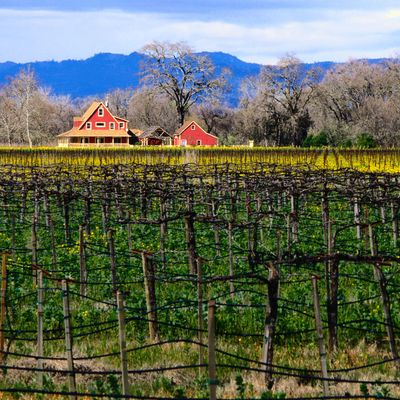
Half the joy of living in the Bay Area is leaving it behind. Fortunately, there is immense natural beauty within easy striking distance of San Francisco. Here, we asked five longtime residents to share where they go when they just need to get away.
Russian River Valley
90 minutes north of city center
“We are inspired by modern art, architecture, painting, and sculpture, but we also like observing nature. We really love the towns that surround the Russian River, because they’re close to the ocean and wine country. We’ll rent a cabin near Guerneville, the gateway town; we prefer more modern interiors — and a hot tub is mandatory. During the day, we’ll eat oysters in Bodega Bay. Fisherman’s Cove is a super low-key, barebones place on the waterfront. We also like to go wine-tasting along Westside Road, which runs from Guerneville to Healdsburg; you can see vineyards, rolling hills, and beautiful oak trees. We visit hidden wineries like Preston Farm and Winery, which has a little farm and a garden with wildflowers where we like to sit with a bottle of wine. We also like VML Winery, whose beautiful labels are painted by the winemaker’s husband.” —Natasha Lisitsa and Daniel Schultz, owners of floral art studio Waterlily Pond
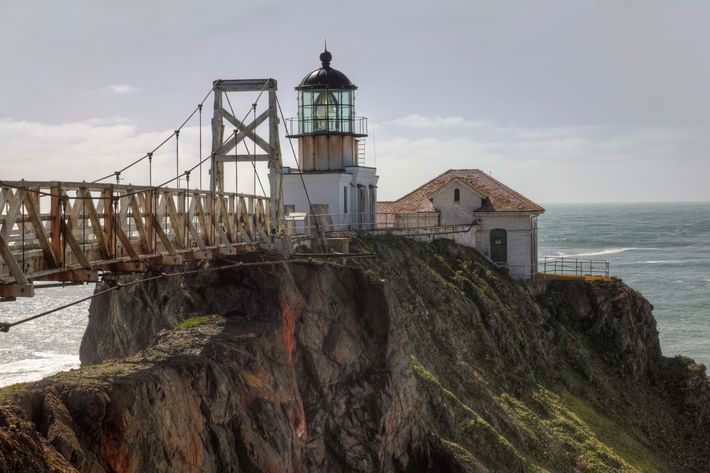
Marin Headlands
35 minutes north of city center
“This is a wonderful place to explore. Start at the Fort Baker area, which is on the Marin side of the Golden Gate Bridge. There’s a famous fishing pier there, plus the coolest bar in the city (Presidio Yacht Club). It’s located in the Travis Marina, so you’re practically in the shadow of the bridge. From there, go to the Point Bonita Lighthouse by walking a quarter mile from the Point Bonita parking lot, down a trail along the cliff, and cross over a narrow footbridge that spans a chasm between the rocks. The wind is usually blowing, which can be intense, but then — there’s the lighthouse, small but epic. It marks the approach to the San Francisco Bay.” —Kirk Lombard, author and angler for Sea Forager Seafood & Tours
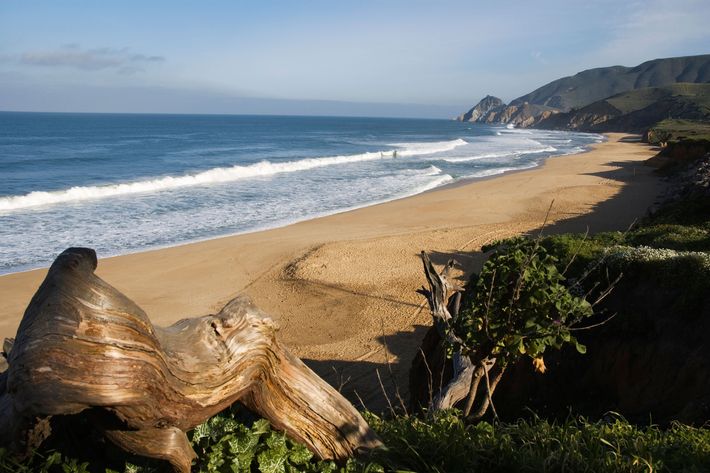
Montara State Beach
30 minutes south of city center
“On a nice day, my family likes to go down to the beach in Montara, south of Pacifica and before Half Moon Bay. We bring a basket of supplies, a blanket, our swimsuits, and maybe a book. You park your car across the highway, then take these trails that meander through the coastal succulent that’s prevalent out there — it’s all different colors, green and purple and red with yellow flowers. You have to hike down to the beach, which is really long and somewhat wide; there’s a lot of space. Then you find a spot for your blanket and just lay out for the next couple of hours. The water is that turquoise teal color that churns with a lot of white, and there are cypress trees everywhere. On clear days, you can see the Farallon Islands. Sometimes, you can even see whales. On our way back home, we usually stop for ribs at Gorilla Barbecue, located in an old train car. The drive back is really nice, too, because the highway follows the beach. Every time I go, I daydream that we live up on the hill in one of the houses overlooking the ocean.” —Katie Gong, woodworker
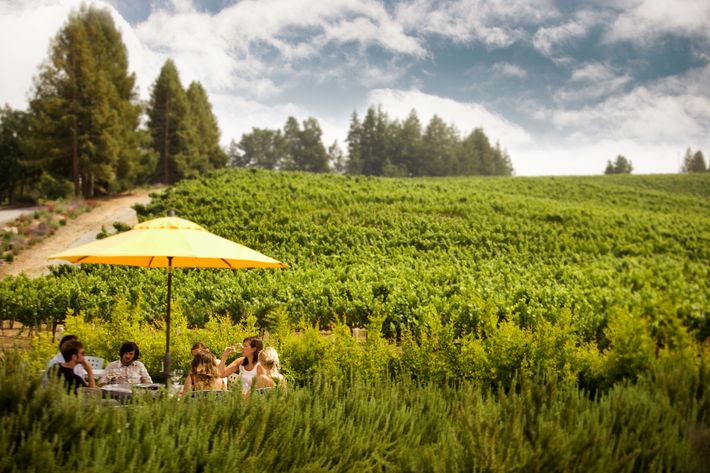
Sonoma
One hour north of city center
“[My husband and I] spend a lot of time in Sonoma, which is a little less crowded than Napa. It looks more wild to me, kind of like Italy, with its Mediterranean climate and landscape. The smells up there are great; there’s a lot of sage and cypress and juniper and redwood. The communities affected by the fire — including the local businesses and wineries — have done an extraordinary amount of work to rebuild what was lost. Many wineries are open for business again and happily welcoming visitors. I’m a Pinot nut, so you’ll find me at places like Copain in Healdsburg. A lot of tasting experiences at the larger vineyards involve standing at a bar and listening to one of the tasting room managers talk about the wine they’re pouring. But at Copain, you’re seated at a dining table that looks out on the vineyards and each wine is paired with a little snack, like a dark-chocolate truffle or a sharp sheep’s milk cheese. Their Pinots are light and fruit-forward, with a lot of body and acid. We also love Acorn Wines, a very small vineyard run by a husband-and-wife duo, Bill and Betsy Nachbaur. They quit their day jobs 30 years ago to buy the vineyard, a sustainable winery that grows a lot of Italian varietals. They don’t have an outdoor space, but Betsy, who runs the tasting room, is super knowledgeable about wine, so she’s fun to listen to. And you’ll see Bill running in and out of the room to check on the fields or the barrels.” —Heather D’Angelo, musician in Au Revoir Simone and founder of Carta, a new line of nature-inspired fragrances
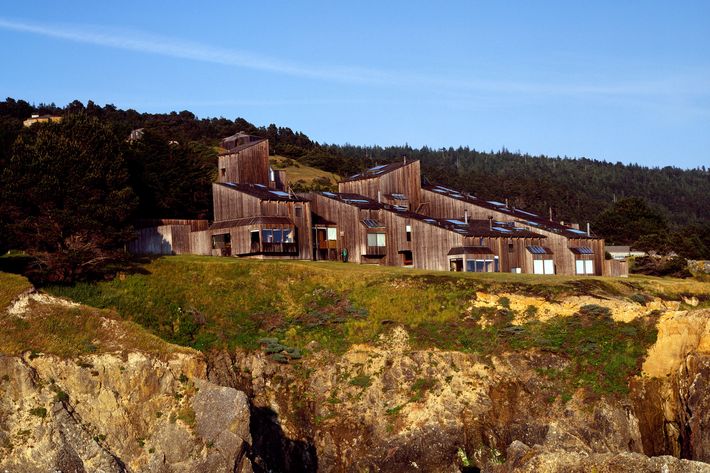
The Sea Ranch
Two and a half hours north of city center
“I love to go to the Sea Ranch near the town of Gualala. It’s a design-forward, planned community that was founded and built on the idea of living lightly on the land — a utopian principle that has held up surprisingly well more than 50 years later. The ten-mile community is not open to the public, but you can stay overnight [if you book a house]. My favorite thing to do is walk the [public-access] trails along the ocean cliffs through the fern and redwood forest. It’s pretty magical: mushrooms, ferns, creeks —oh my! I feel like a woodland fairy and leave more relaxed, rejuvenated, and refreshed. I usually stay with friends in one of the original homes at the Sea Ranch, like the Hines House, which was built in 1968 by William Turnbull and is bookable through Airbnb (from $450). Nearby, in Gualala, is Placewares, a company that’s been around for, I think, 40 years. It’s always been at the forefront of European and Scandinavian design; they carried Marimekko before people were carrying Marimekko. They have a gallery with revolving shows, and they do collaborations. For a gallery exhibit with Jim Isermann, they produced mugs and coasters and trays with his art on them. It’s such a good place to shop. You can’t walk out of there empty-handed.” —Miranda Jones, founder of Galanter & Jones, a line of heated outdoor furniture